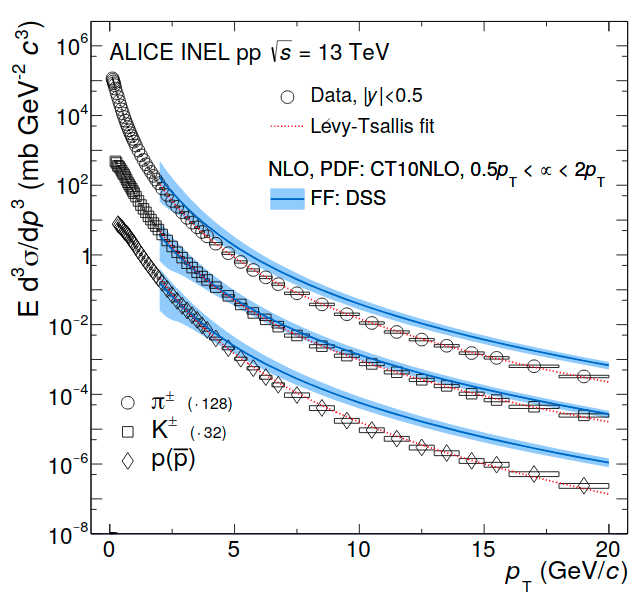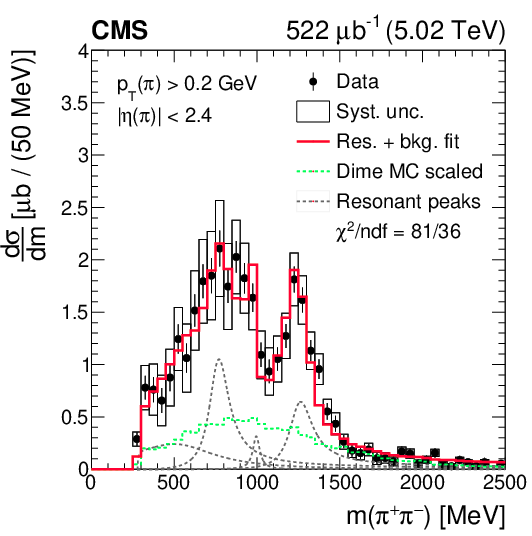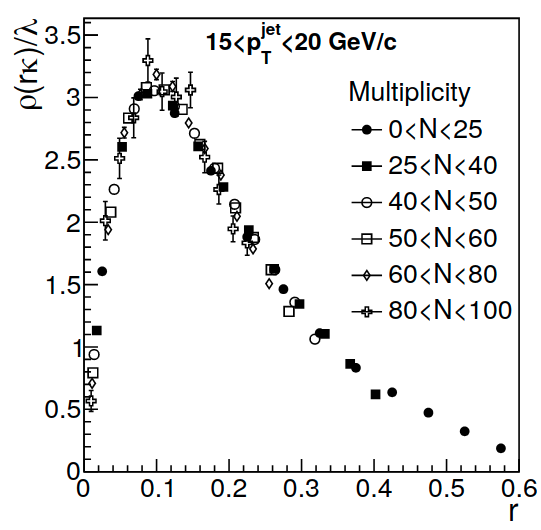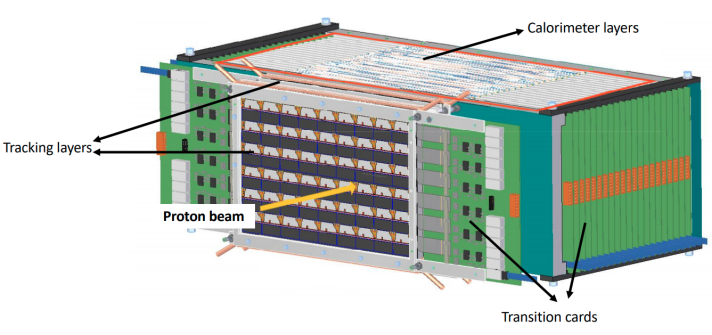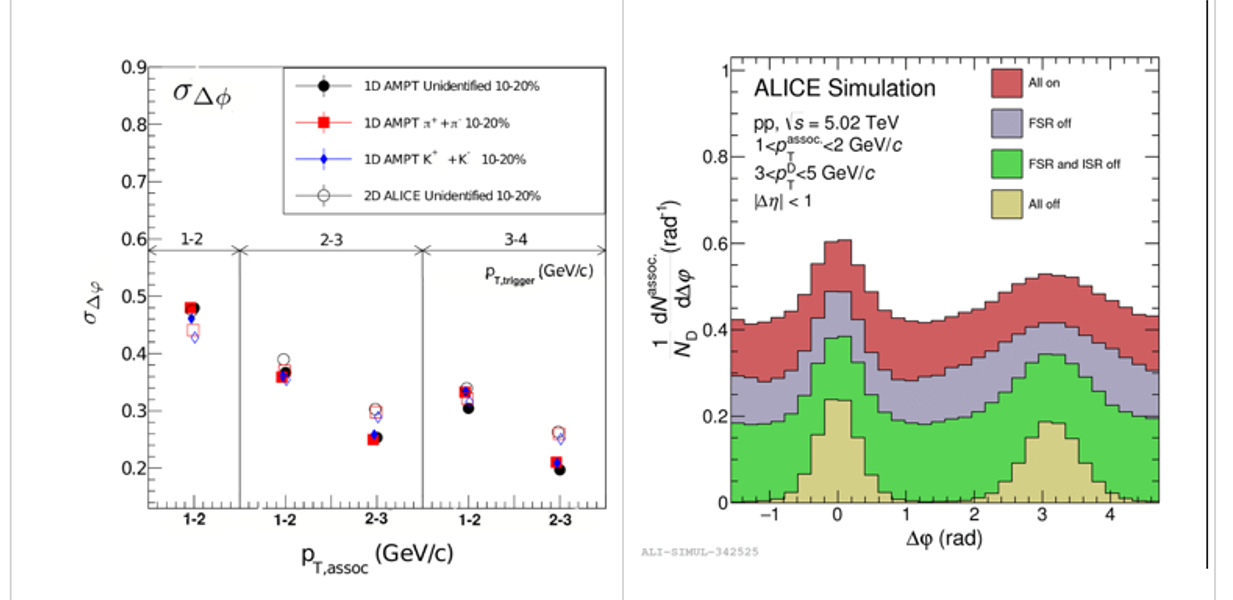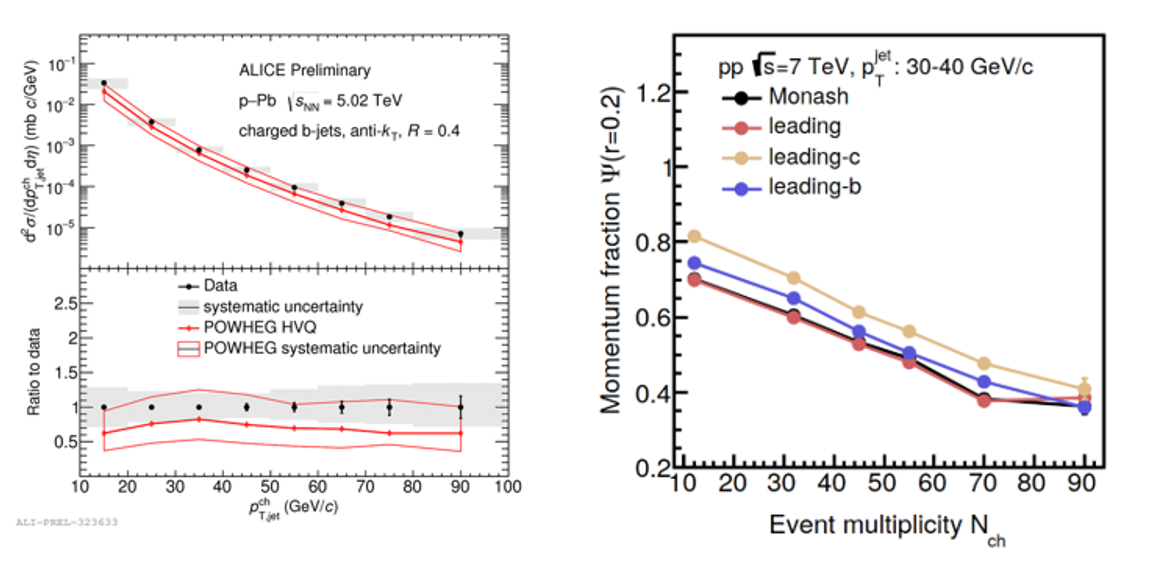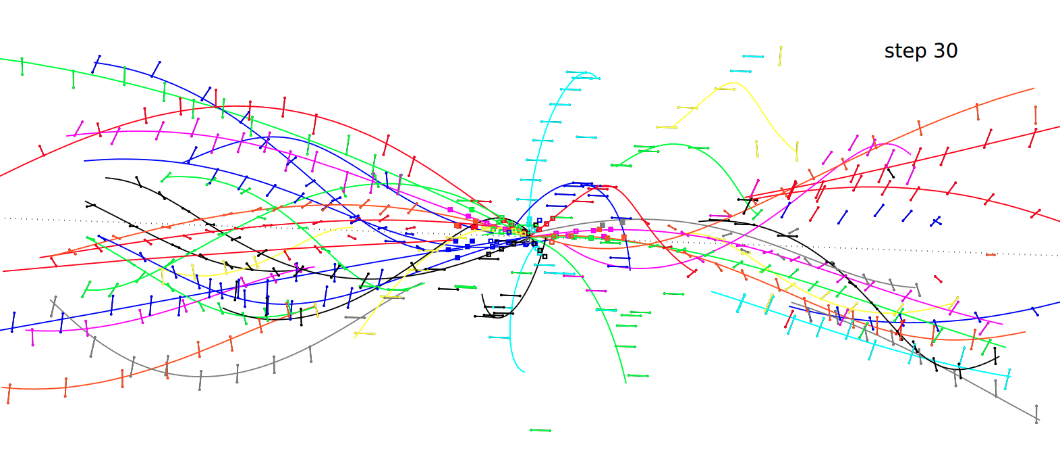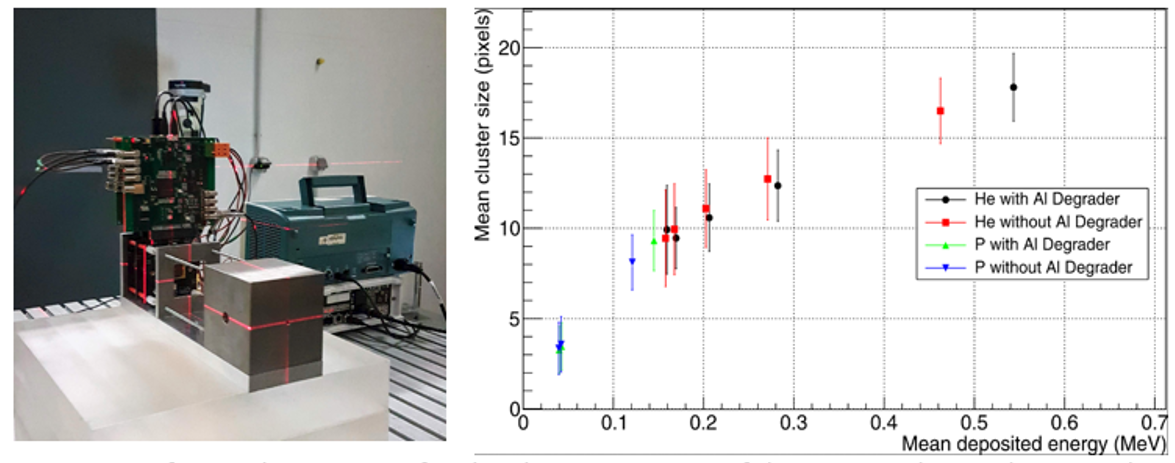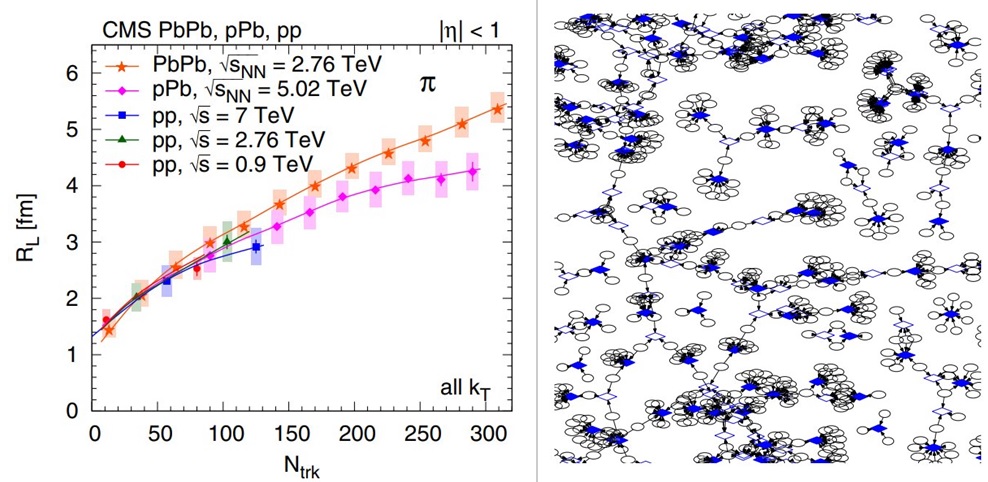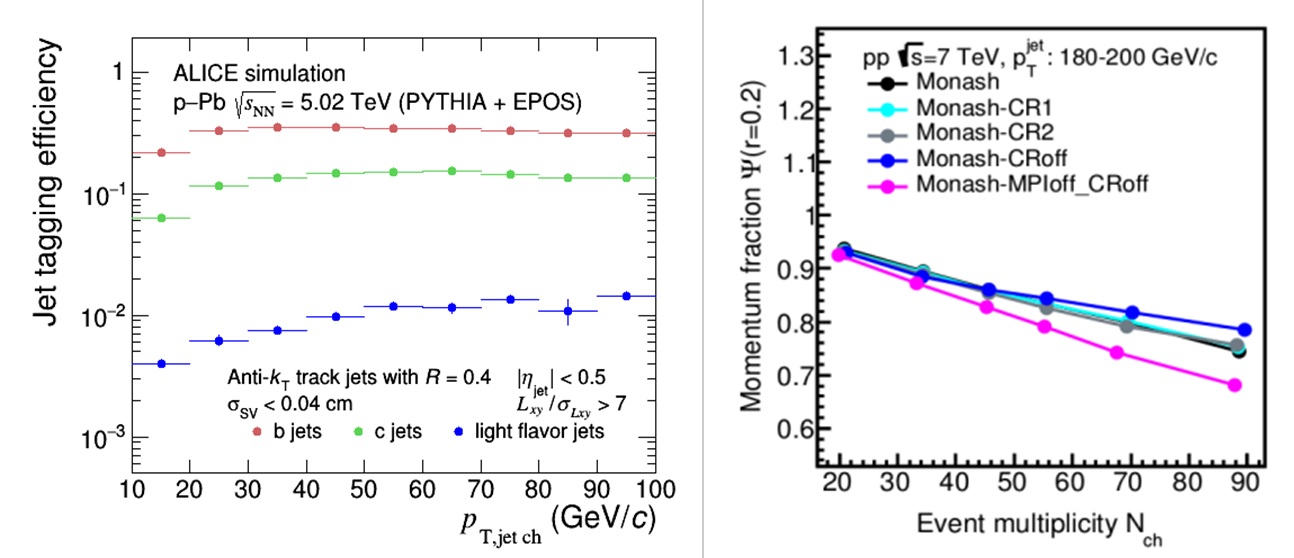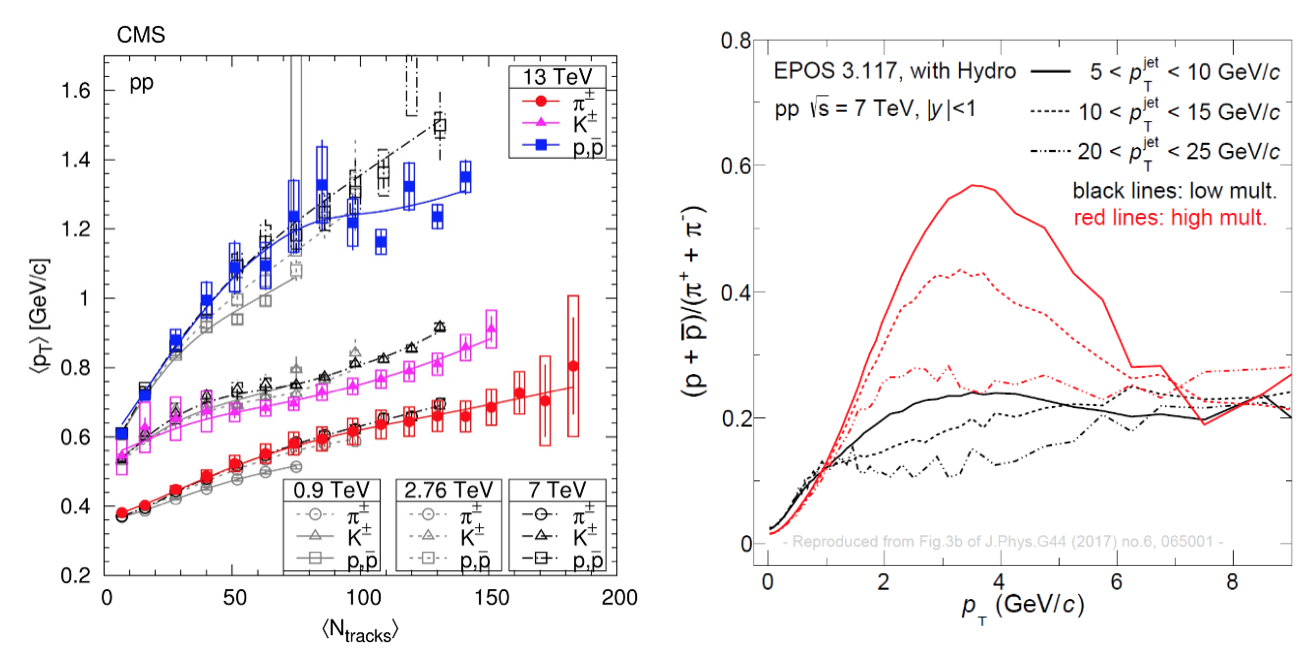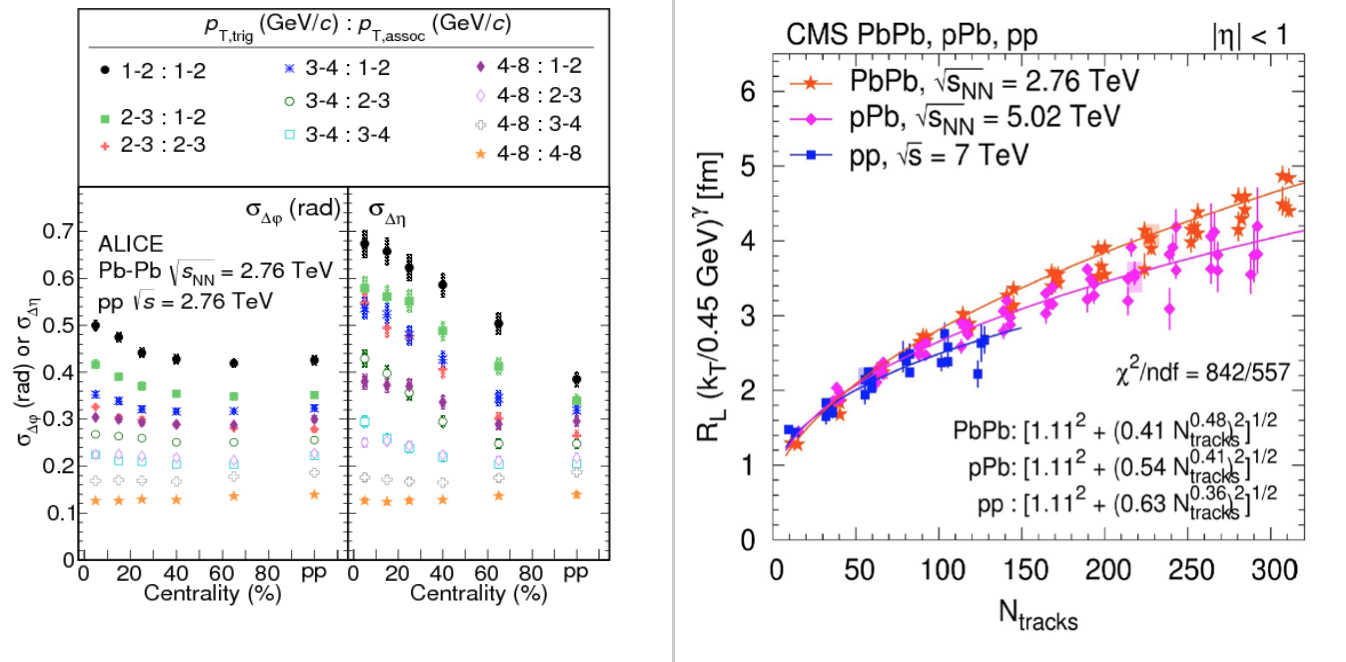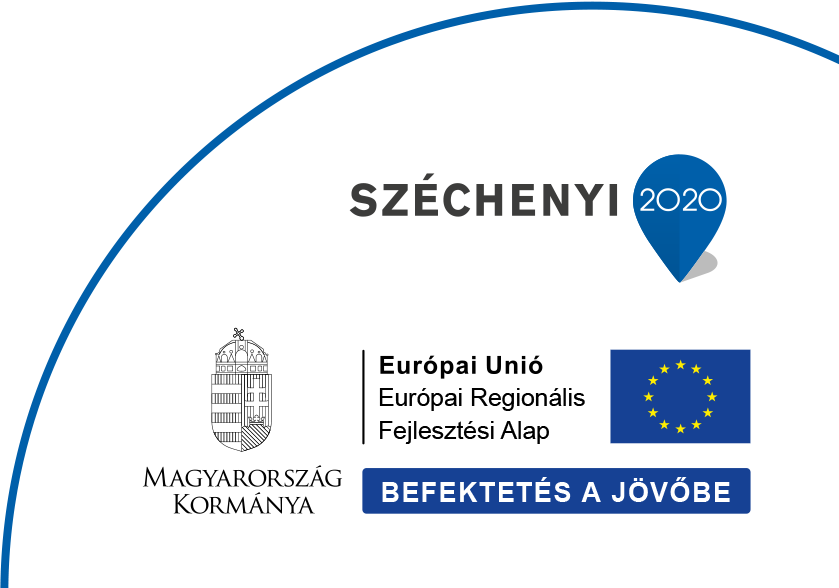2023
The role of the underlying event in the heavy-flavor baryon enhancement. — Perturbative quantum chromodynamics (pQCD) calculations have been successful in describing the production of heavy-flavor mesons at several energies at the LHC. These descriptions usually rely on the factorization approach, in which the production cross sections of heavy-flavor hadrons in hadronic collisions are calculated as a convolution of the parton density functions (PDFs) of the colliding hadrons, the cross section of the hard-scattering process and the heavy-quark fragmentation function. Recent experiments from the LHC, however, show a relative enhancement of charmed baryons compared to expectations using the factorization approach with universal fragmentation. We investigated the production of charmed baryons with different isospin and strangeness content, compared to both charmed D0 mesons and to the Λc+ baryon in proton–proton collisions at LHC energies (Figure 1). We used the PYTHIA 8 Monte Carlo event generator with color reconnection beyond leading-color approximation and proposed methods based on event-activity classifiers to probe the source of the charmed-baryon enhancement. We conclude that in the considered model class, the isospin of the charmed-baryon state has a strong impact on the enhancement pattern. Using the observables we propose, upcoming high-precision experimental data will be able to differentiate between mechanisms of strangeness and charm enhancement [1].
Heavy-flavor azimuthal correlations in the ALICE experiment and in simulations. — In high-energy hadronic collisions, heavy quarks (charm and beauty) are mainly produced in hard parton scattering processes. Two-particle angular correlations originating from heavy-flavor particles allow for the characterization of parton shower and fragmentation. We contributed to the measurement of heavy-flavor electron-hadron azimuthal correlation distributions between heavy-flavor decay electrons and associated charged particles, by the ALICE experiment at the LHC, in pp and p–Pb collisions at √sNN=5.02 TeV. The correlation structures are fitted with a constant and two von Mises functions to obtain the baseline and the near- and away-side peaks, respectively. The evolution of the near- and away-side peaks of the correlation functions in pp and p–Pb collisions is found to be similar in all the considered kinematic ranges. This suggests that the modification of the fragmentation and hadronization of heavy quarks due to cold-nuclear-matter effects is indistinguishable within the current precision of the measurements [2].
In high-energy collisions of small systems, by high-enough final-state multiplicities, a collective behavior is present that is similar to the flow patterns observed in heavy-ion collisions. Recent studies connect this collectivity to semi-soft vacuum-QCD processes. In a recent work we explored QCD production mechanisms using angular correlations of heavy flavor using simulated proton-proton collisions at √s=13 TeV with the PYTHIA8 Monte Carlo event generator. We demonstrate that the event shape is strongly connected to the production mechanisms. Flattenicity (ρ), a novel event descriptor, can be used to separate events containing the final-state radiation from the rest of the events [3], as shown in Figure 2.
We have also carried out an ALICE measurement of D-meson production in function of the transverse event-activity classifier RT. This work will become part of a later ALICE publication.
Multi-parton interactions in pp collisions using charged-particle flattenicity. — Despite the large amount of soft-QCD results on collectivity in pp and p–Pb collisions (small-collision systems), the origin of these phenomena is not yet fully understood. Amongst various theoretical approaches, the PYHTIA 8 model can reproduce many of the experimental results by the modeling of a non-perturbative final-state effect, color reconnection (CR), and multi-parton interactions (MPI). MPI allow the simultaneous occurrence of several incoherent binary semi-hard partonic interactions in a single pp collision, which produce multi-minijets topologies. When the event classification is performed in charged-particle multiplicity measured at large pseudorapidities, the multiplicity based on PYTHIA is strongly correlated with the MPI activity.
We explored a novel event classifier, flattenicity, that quantifies the shape of the event using experimental information from both azimuthal and forward/backward pseudorapidity directions [4].
For the first time, the ALICE experiment at the LHC studied the transverse momentum (pT) spectra of primary charged pions, kaons, (anti)protons and unidentified hadrons as a function of flattenicity and double-differentially as a function of flattenicity and charged-particle multiplicity in pp collisions at √s=13 TeV. The preliminary data suggest that, for multi-minijet events, the ratio of event-class dependent pT spectra to that of MB (𝑄pp) develops a pronounced peak with increasing multiplicity that is mass dependent. Results are qualitatively described by the PYTHIA model based on color strings and indicate that flattenicity-selected events show reduced sensitivity to multijets [5].
Novel reconstruction methods for forward protons. — The TOTEM Roman pot detectors are used to reconstruct the transverse momentum of scattered protons and to estimate the transverse location of the primary interaction. We have developed advanced methods for local track reconstruction, for the measurement of strip-level detection efficiencies, cross-checks of beam optics, and steps of detector alignment, along with their application in the selection of signal collision events. The local track reconstruction is performed by exploiting hit cluster information through finding a common polygonal area in the intercept-slope plane. The tool is applied in the relative alignment of detector layers with µm precision. A tag-and-probe method is used to extract strip-level detection efficiencies. The proton reconstruction corrections are calculated using a simulation. The absolute alignment of the Roman pot system is performed through several measured quantities. The necessary run-by-run adjustments are in the range ±50 µm in horizontal, and ±0.5 mm in vertical directions. The goal was to provide a solid ground for physics analyses based on the high-β∗ data taking period at the LHC.
Jet substructure and fragmentation studies with ALICE and CMS. — The Koba-Nielsen-Olesen (KNO) scaling hypothesis is an influential contribution to the analysis of event multiplicities in high-energy particle collisions, according to which the event-multiplicity distributions can be all collapsed onto a universal scaling curve. Recent phenomenological studies suggest that a similar scaling may hold within single jets, if we consider the jet multiplicity as a function of the jet transverse momentum. We have been working on the first measurement of this scaling for single jets in proton-proton collisions at √s=13 TeV with ALICE, which can help further our understanding of jet fragmentation properties.
We continued to analyze the intrinsic structure of the jets recorded by the CMS. By studying a large sample of data obtained by various triggers from 2017, we were able to obtain information on the extreme corners of the phase space. The promising preliminary studies include the corresponding systematic uncertainties and the results are compared to various model predictions.
Detection of forward neutrons and high-precision luminosity measurements at CMS. — Continuing the analysis we began last year, we obtained gain factors for the channels of the ZDC. We also participated in the heavy ion data taking at CERN, where the ZDC was also used as a trigger measuring the one-neutron peak. For the ZDC trigger we also carried out validation during the whole data-taking period.
Based on the ideas depicted last year, we worked on obtaining the XY factorization bias for the proton-proton data from 2022. We carried out 1D fits and obtained an additional orbit drift correction, with which 2D fits can be carried out more precisely. We then fitted the data points in 2D (pairing different types of measured data) with various shapes (fitting models). We did simulations in order to obtain the corrections on the visible cross-section. We also examined multiple parameter-dependences of these obtained values. After choosing the stable models and checking that all luminometers can be trusted, we could obtain the final correction value with its RMS. We also determined the corresponding systematic uncertainty.
The Beam Position Monitors (BPMs), located near the CMS detector and in the adjacent arc of the LHC, measure the positions of the circulating beams. To obtain an accurate calibration, the measurements have to be corrected for the time-dependent movement of the beams and the residual component of the orbit drift. We joined the efforts of the CMS BRIL (Beam Radiation, Instrumentation and Luminosity) team to calculate these corrections for the latest van der Meer calibration fill recorded in 2023.
Application of the Tsallis-thermometer for charm hadrons from RHIC to LHC energies. — We analyzed the transverse momentum distributions of the identified D0, D+ and D*+ mesons within a non-extensive statistical framework. The studied D meson data comes from pp, p-Pb and A-A collisions from ALICE and STAR experiments, covering the center-of-mass energy range between 200 GeV and 7 TeV. We investigate the behavior of heavy-flavored D mesons with the so-called Tsallis-thermometer and compare it to the light-flavored hadrons. In our preliminary results we show that mass hierarchy and strong multiplicity dependence are more distinct for D mesons compared to the light-flavor particles. Moreover, the common equilibrium values of Tsallis parameters for D mesons correspond to the higher temperatures and degrees of freedom, which may point that D mesons are coming from the earlier stages of a collision.
References
[1] Varga Z, Misák A, Vértesi R, J.Phys.G 50 (2023) 7, 075002
[2] Horváth A, Frajna E, Vértesi R, Universe 9 (2023) 7, 308
[3] ALICE Collaboration, Eur. Phys. J. C 83 (2023) 741
[4] Ortiz A et al. incl. Bencédi Gy, Phys.Rev.D 107 (2023) 7, 076012
[5] Bencédi Gy. (for the ALICE Collaboration), arXiv:2312.11140 (2023).
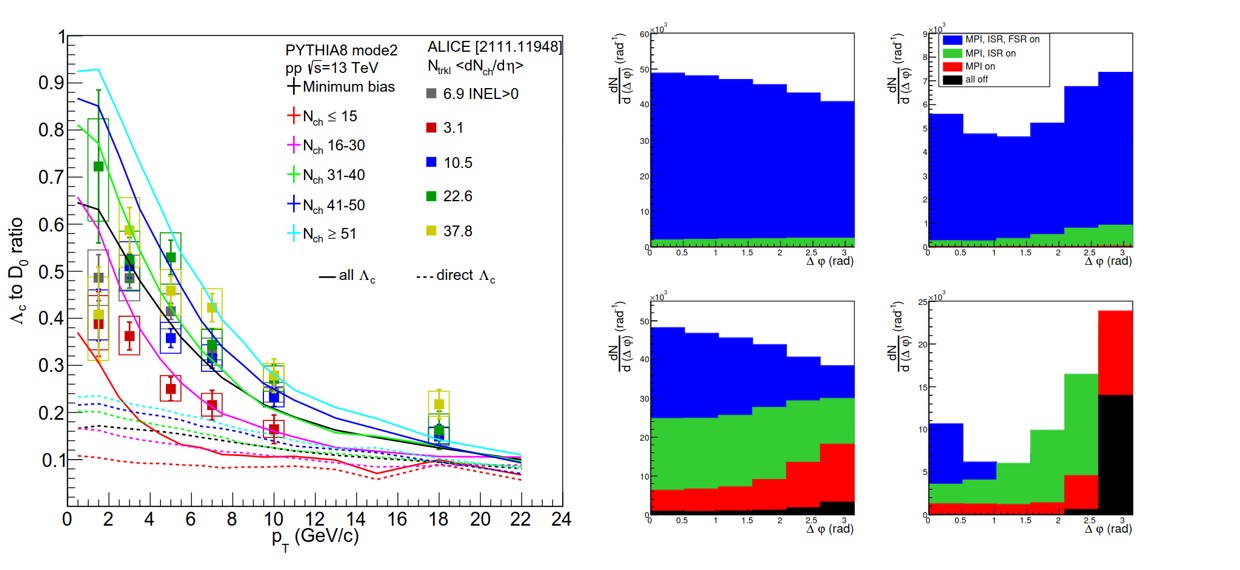
Figure 1. Λc+/D0 ratio from PYTHIA 8 simulations with enhanced color reconnection as a function of pT, for minimum bias events as well as for different mid-rapidity charged-hadron multiplicity (Nch), compared to data from ALICE data. The contribution of direct Λc+ production is shown as dashed lines. Figure 2. The azimuthal correlation of charm–anticharm pairs, where pT < 4 GeV/c and pT > 4 GeV/c (left and right columns respectively), and the top row shows the low ρ range, and the bottom row represent high ρ. Different parton-level process settings are presented with different colors.
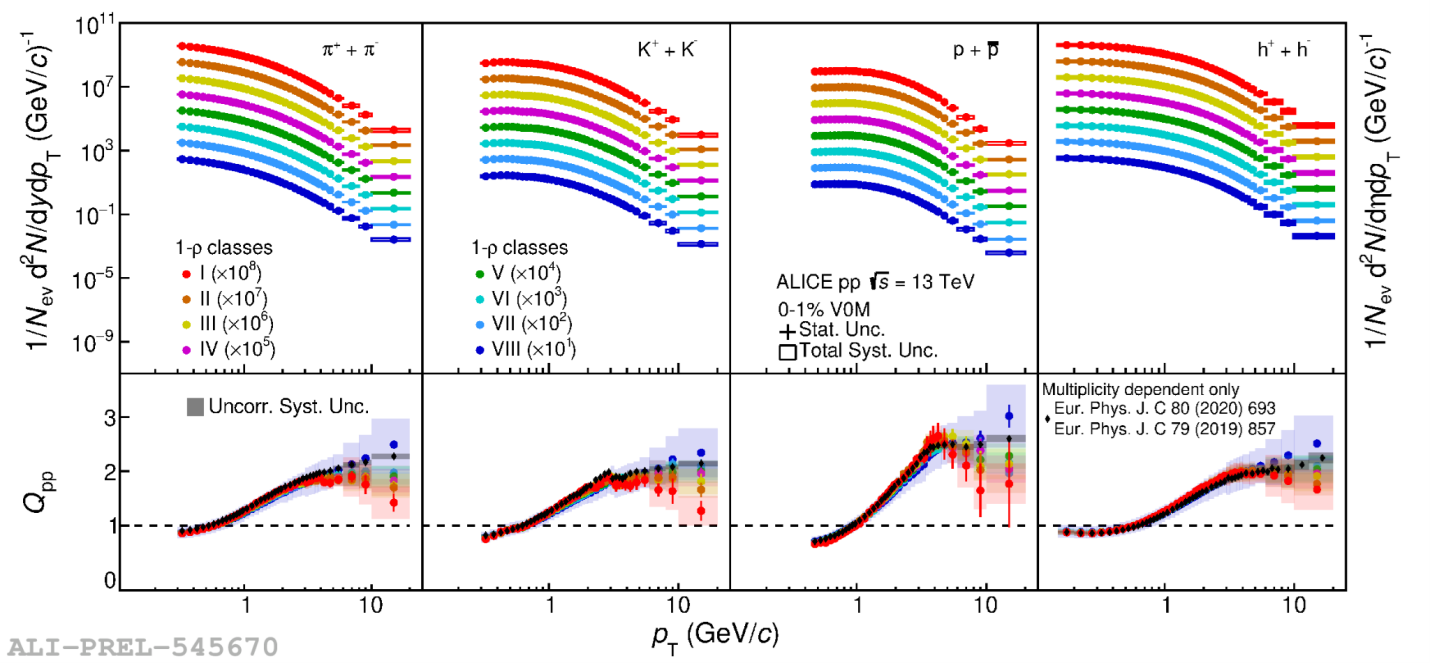
Figure 3: Transverse momentum (pT) spectra of charged pions, kaons, (anti)protons and unidentified hadrons for different flattenicity event classes (top figure), and for high-multiplicity events (0-1% V0M) in the same flattenicity event classes (bottom figure). Bottom panels in each figure show the event-class dependent pT spectra to that of MB for the corresponding event classes.



